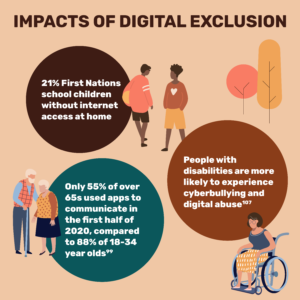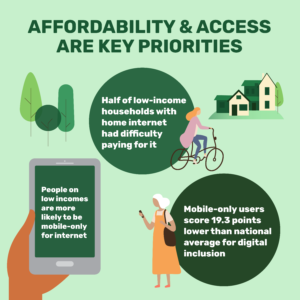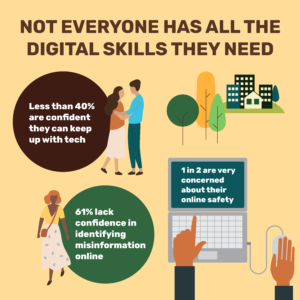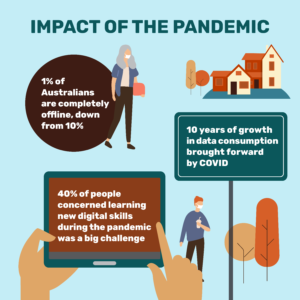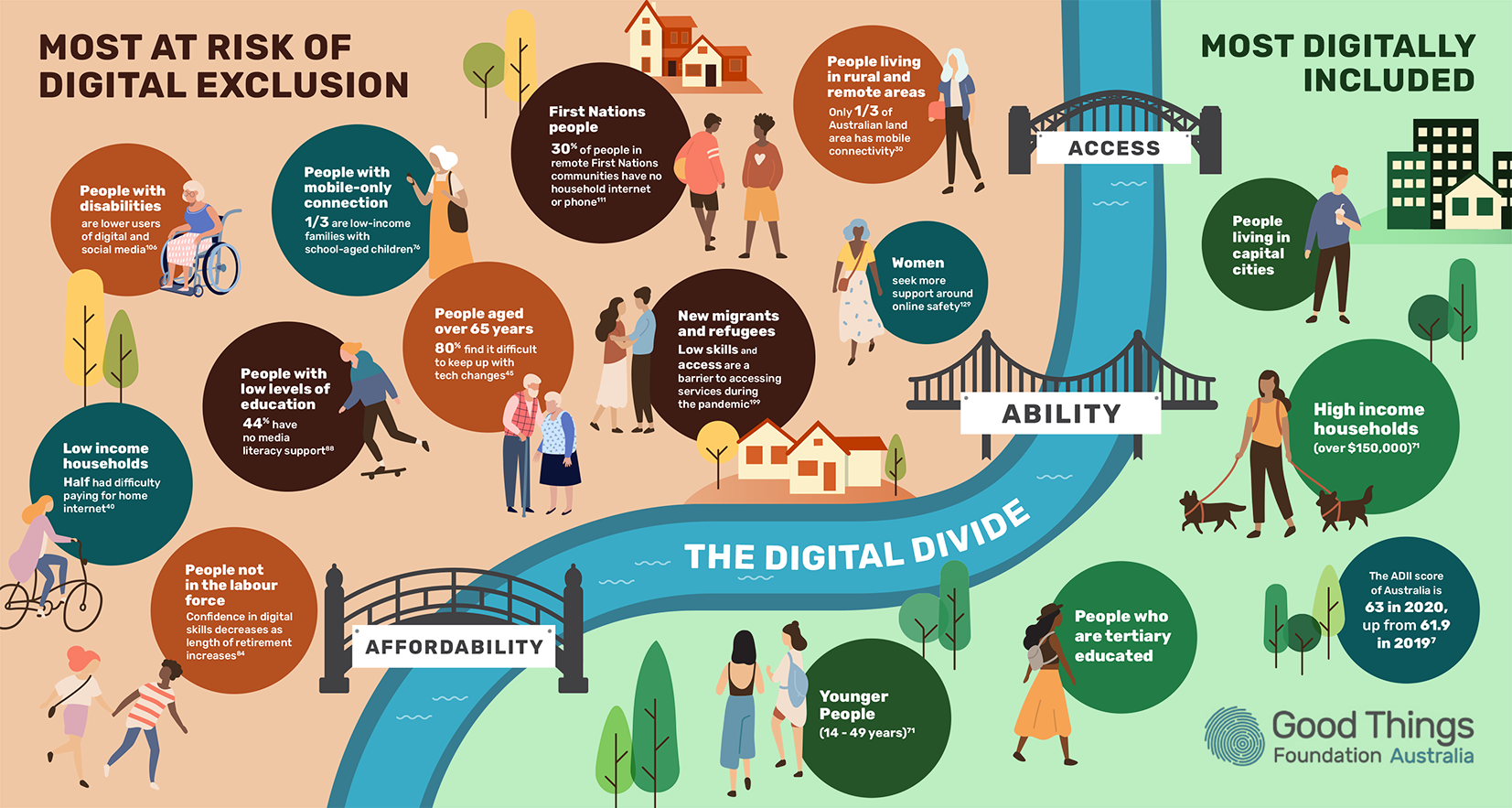We’re thrilled to be launching our new Digital Nation Australia 2021 report.
The digital divide is a significant issue in modern Australia, particularly with the rapid pace of digitisation brought forward by the COVID-19 pandemic. Digital technology has become an essential requirement for work, study, accessing essential services and connecting with family and friends.
The positive news is that the digital divide is slowly improving in Australia, and that initial research points to more people being active online than they were before the COVID-19 pandemic.
However, some groups are still more at risk of digital exclusion than others, meaning they are at risk of being left behind and face increasing barriers when interacting with a digitised society. Even after Australians are affordably connected to the internet (a barrier in and of itself), many people still don’t feel confident or safe online, or feel they can’t keep up with technological changes.
Good Things Foundation Australia’s Digital Nation Australia 2021 report brings together the latest research and insights from government, community and academia to help build understanding of the digital inclusion landscape in Australia and inform initiatives that could close the digital divide for all.
During the pandemic, the rate of people completely offline fell from 10% to just 1%. However, still less than 40% of Australians felt confident that they could keep up with the rapid pace of change in technology.
When pulling together this research, we found that the most at-risk groups for digital exclusion in Australia include:
- First Nations people: In remote First Nations communities, 30% of people have no household internet or phone connection.
- Rural and remote Australians: Even with the roll-out of the NBN, only one third of Australia’s land area has mobile connectivity. This is despite regional and remote areas making up 30% of the Australian population.
- Low-income households and those with a mobile-only data connection: Half of low-income households had difficulty paying for home internet. Meanwhile, one third of those with a mobile-data only connection are low-income families with school-aged children.
- Women: Low digital literacy means women are more vulnerable to online abuse.
- New CALD migrants and refugees: Low digital skills and access are a barrier to accessing services during the pandemic and job opportunities more broadly.
- People with disabilities: People with disabilities are lower users of digital and social media and are more likely to experience cyberbullying and digital abuse.
- Those over 65 years of age: 80% find it difficult to keep up with tech changes.
- People outside of the labour force: Confidence in digital skills decreases as length of retirement increases.
- People with low levels of education: 44% have no media literacy support.
This can have a big impact on people’s lives across employment, education, and safety. Research presented in Digital Nation Australia 2021 shows:
- 87% of jobs in Australia now require digital skills.
- 46% of employees were working from home in April 2020, and 58% of people said that the internet was essential to work during the pandemic.
- Since the pandemic, 81% of respondents in a survey by The Smith Family were concerned about students struggling to do schoolwork without reliable access to a laptop and internet.
- 61% don’t feel confident that they can identify misinformation online.
People who don’t have the essential digital skills to be safe and confident online and those who do not have affordable access to the internet are at risk of being left behind as the world moves further online.
At a glance
The Digital Nation 2021 report pulls together research on digital inclusion across a number of areas. Click below infographics to enlarge.
Read more about these stats, find their references, and gain a deeper understanding of the digital inclusion landscape in Australia in our Digital Nation Australia 2021 report.

